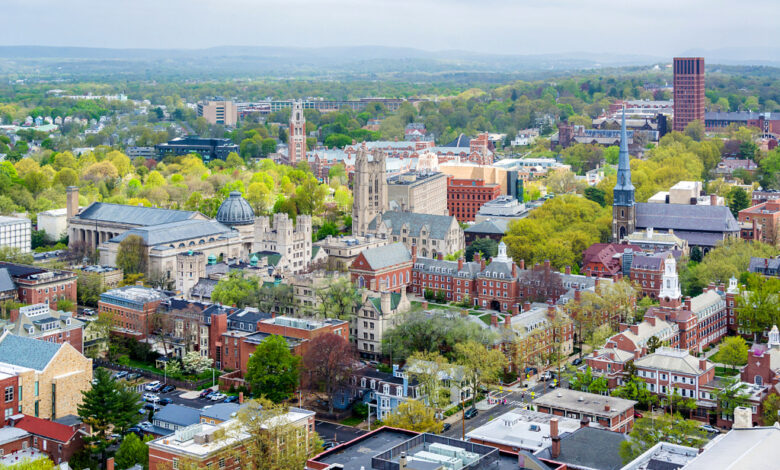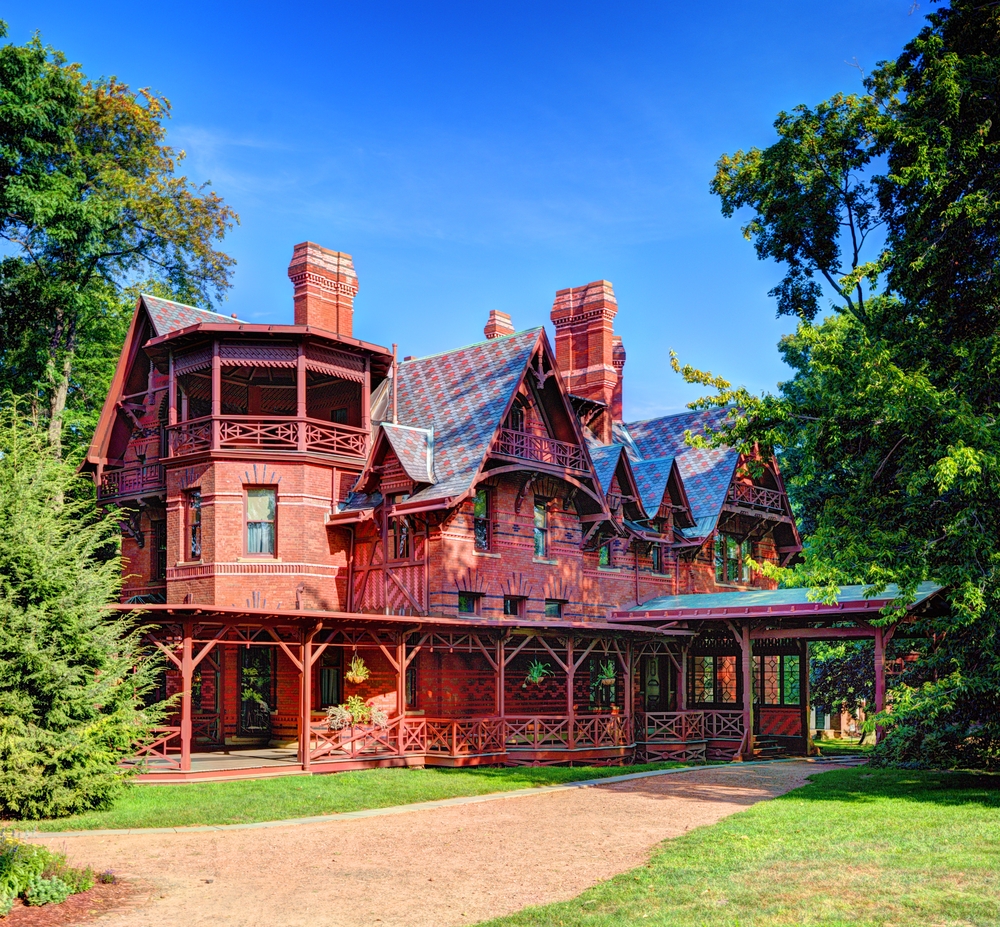12 Pros and Cons of Living in Connecticut: What to Know

Renting in Connecticut snapshot
| Population | 3,675,069 |
| Avg. studio rent | $1,317 per month |
| Avg. one-bedroom rent | $1,559 per month |
| Avg. two-bedroom rent | $1,947 per month |
| Most affordable cities to rent in Connecticut | Waterbury, Meriden, Bristol |
| Most walkable cities in Connecticut | New Haven, Hartford, Bridgeport |
1. Pro: The past shines through its landmarks
There’s a lot to explore regarding Connecticut’s past. You can visit the Mark Twain House in Hartford, where the celebrated author wrote classics like The Adventures of Tom Sawyer. In the Mystic Seaport Museum, transport to the maritime heyday of the 19th century, with historic ships and an authentic village that feels like stepping into another era. Additionally, the state is dotted with colonial homes, Revolutionary War landmarks, and historical trails that tell the story of America’s early days.

2. Con: The high cost of calling Connecticut home
Connecticut can be tough on the wallet. With a cost of living that outpaces the national average, it’s important to plan ahead if you’re thinking of moving here. Housing costs are particularly steep in towns like Greenwich, where homes often sell for millions. Even rentals can make your budget feel stretched—one-bedroom apartments in areas like Stamford or Westport can easily exceed $2,500 a month. But it’s not just housing; transportation, healthcare, and even groceries can feel pricier than in neighboring states. While these expenses reflect the state’s proximity to major metropolitan areas and its high standard of living, they can make everyday life a financial juggling act.
3. Pro: Education shines across Connecticut
If education is a priority, Connecticut delivers, as the state’s schools are consistently ranked among the best in the nation. Beyond the K-12 system, Connecticut is home to Yale University in New Haven, one of the most prestigious Ivy League schools in the country. Institutions like the University of Connecticut and Wesleyan University also offer top-notch programs. This access to quality education from primary levels through to higher education institutions ensures residents have ample opportunities for academic development.

4. Con: Winter’s icy grip on the state
Winters in Connecticut are nothing short of an endurance test. Snowstorms can dump several inches—or feet—of snow, creating treacherous road conditions and endless shoveling. Residents in cities like Waterbury know all too well the hassle of digging out cars and navigating slippery streets. Ice storms add another layer of challenge, often leading to power outages that leave you bundling up indoors. On top of the physical effort, heating costs can skyrocket during the cold months, making winter a financial strain as well.
5. Pro: Scenic views around every corner
There’s plenty of reasons that Connecticut is a good place to live, and the landscapes are one of them. The Litchfield Hills offer rolling countryside perfect for long drives or weekend hikes, while the Connecticut River winds gracefully through towns and farmland. Coastal areas like Mystic feature rocky beaches and historic lighthouses, making it a great spot to explore. And in the fall, the entire state transforms with shades of reds, oranges, and yellows, drawing people in from across New England.
6. Con: Traffic troubles during peak hours
Driving in Connecticut often feels like a test of patience. Major highways like I-95 and the Merritt Parkway become parking lots during rush hour, particularly in large cities like Stamford and New Haven. Long commutes and frequent delays can make even short trips feel frustrating. Roadwork and construction zones seem to be a year-round phenomenon, adding to the congestion. Public transportation options, while available, don’t always provide seamless alternatives for commuters.

7. Pro: Creativity thrives in the art scene
Art and culture are everywhere in Connecticut. The Wadsworth Atheneum Museum of Art in Hartford, established in 1842, houses works spanning centuries, from European masterpieces to contemporary pieces. The Goodspeed Opera House in East Haddam is a gem for theater enthusiasts, producing award-winning musicals that often make their way to Broadway. Smaller galleries and local theaters bring creativity to towns and cities across the state. Events like the International Festival of Arts and Ideas in New Haven showcase everything from dance and music to lectures and workshops, making Connecticut a great place to celebrate and support the arts.
8. Con: Nightlife fizzles in smaller towns
If you’re used to the late-night buzz of a big city, Connecticut’s nightlife might feel a little underwhelming. While New Haven’s bar scene and Hartford’s live music venues offer some excitement, the options in smaller towns are often limited to a quiet pub or an early-closing restaurant. For many residents, entertainment revolves around house parties, community events, or heading to neighboring New York City or Boston for a bigger night out. The subdued nightlife does make for quieter evenings, but if you’re someone who thrives on a packed social calendar, you might need to get creative to keep things lively.
9. Pro: Plenty to explore in the state
Connecticut is packed with opportunities for exploration, offering a little something for everyone. If you’re in the mood to tour, you can wander through charming colonial towns like Old Wethersfield or visit historic landmarks such as the Mark Twain House in Hartford. Up for some hiking? The Appalachian Trail cuts through the state, perfect for daily hikes. Coastal explorers will find sandy beaches and quaint seaside villages in spots like Old Saybrook, perfect for a weekend getaway. Foodies can embark on a journey through Connecticut’s famous pizza trail, sampling world-renowned pies from New Haven institutions like Frank Pepe Pizzeria.

10. Con: Allergy seasons can be rough
Spring in Connecticut is a mixed blessing—flowers bloom, trees bud, and pollen fills the air. For those with seasonal allergies, this means months of sneezing, itchy eyes, and relentless runny noses. Fall can be just as challenging, with ragweed and other allergens making their presence known. While the changing seasons bring undeniable beauty, they also test the patience (and sinuses) of anyone sensitive to airborne allergens.
11. Pro: Easy to travel around
Connecticut’s location makes it easy to get where you need to go. Interstate highways like I-95 and I-84 connect the state to major cities like New York and Boston, while the Metro-North Railroad provides a reliable option for commuters heading into Manhattan. Local bus services offer additional options in urban areas, and ferries across Long Island Sound make for a scenic way to travel. While traffic can be an issue, the sheer number of transportation options ensures that residents have plenty of ways to get around.
12. Con: Flooding and storm warnings
Connecticut isn’t immune to the wrath of Mother Nature. Hurricanes and severe storms occasionally hit the state, particularly in coastal areas like New London or Milford, where flooding can become a serious concern. In the winter, nor’easters bring heavy snow and high winds, creating dangerous conditions and sometimes knocking out power. While earthquakes are rare, they do happen on occasion. Residents have learned to stay prepared with emergency kits and plans, ensuring they’re ready for whatever the weather might throw their way.
Methodology : The population data is from the United States Census Bureau, walkable cities are from Walk Score, and rental data is from ApartmentGuide.




